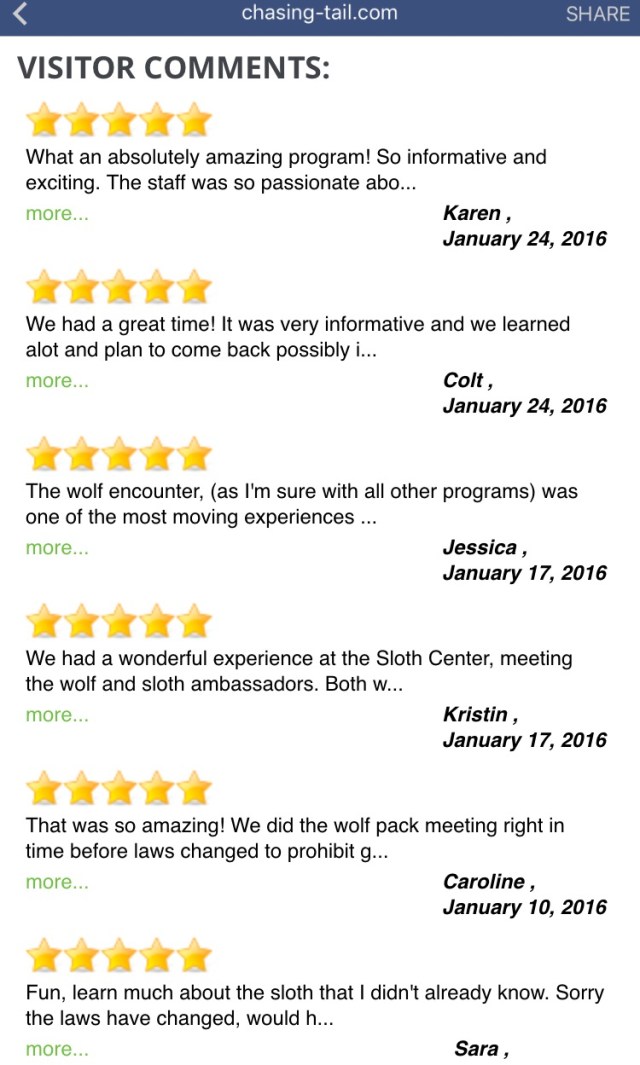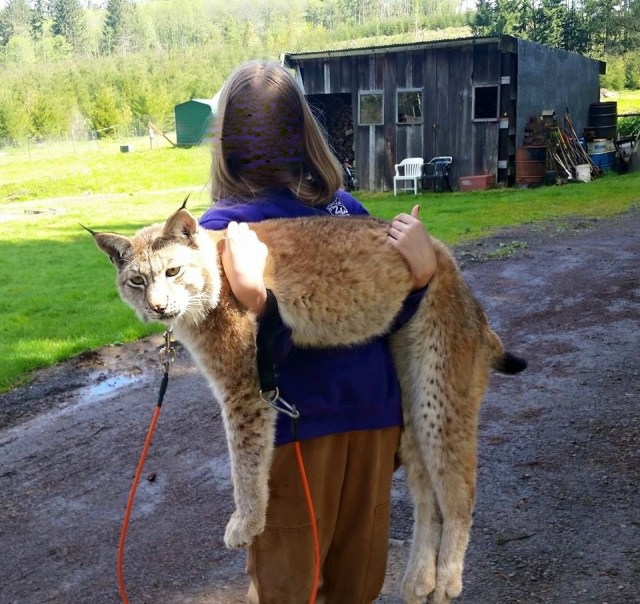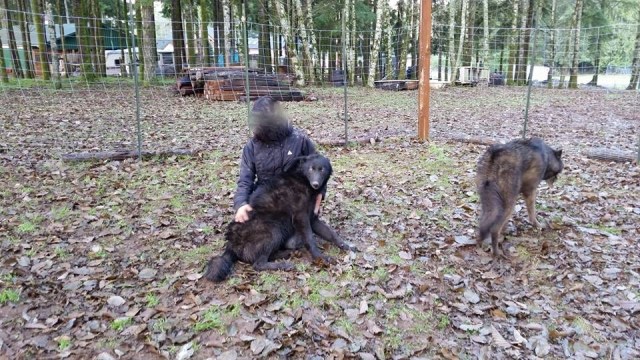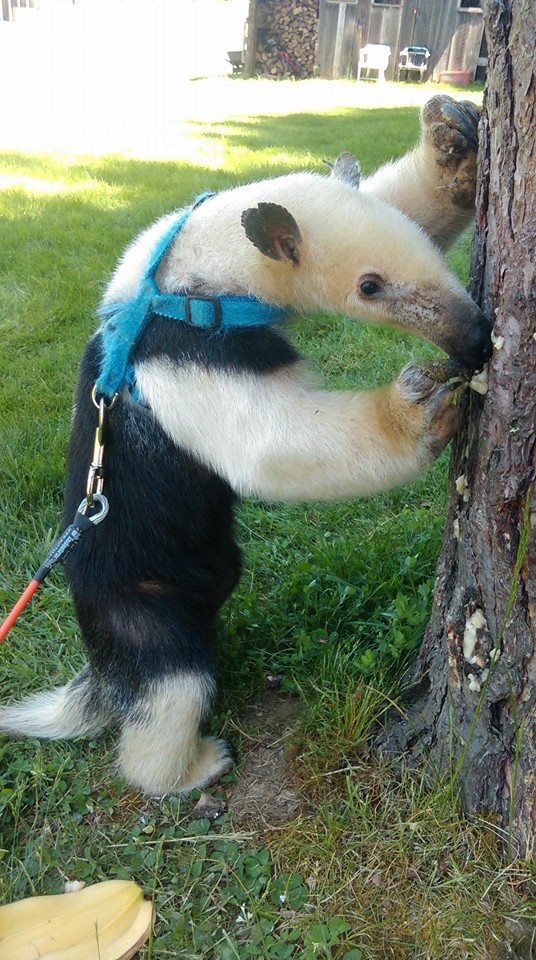In my last article I focused on the narcissism of animal interactions, specifically the pay-to-play schemes run by so many “sanctuaries” which are not GFAS accredited. I also touched on those who glorify the handling of big cats, like Eduardo Serio and Black Jaguar White Tiger. I had intended to turn my attention on the various celebrities who propagate the public’s desire to hold and take photographs with captive wild animals, but Black Jaguar White Tiger has recently made such a textbook example of themselves in the matter of narcissism and hands-on interactions that it was impossible to ignore.
In just the last few days, Serio has introduced not one, but two, new cubs to his followers. One of them is Gorakh, a white lion, who “came” to him from the same place where he also got Limubai, General, Slider, and Ghost. As Serio puts it, he is “a very lucky person to have friends that help me rescue these babies”. Or, from a more rational perspective, and since he refuses to ever disclose exactly from where he gets the cubs, or exactly from whom he gets them, he’s lucky to have such a steady supply of cubs which can so conveniently be “rescued”.
But I digress. Gorakh (who was introduced to Serio’s followers one day, and put in with other cubs the next, without any discussion of quarantine or other precautions where the spread of zoologic diseases are concerned) is a seemingly healthy lion cub.
The same cannot be said for the second big cat cub Serio so proudly introduced to his adoring fans. Achilles the tiger cub arrived at Black Jaguar White Tiger with four broken bones, two of them already incorrectly fixed with pins and fused permanently, and a slew of other internal problems, including intestinal issues. The cub was in profound agony.
So what did Serio do?
He videoed the suffering animal as it lay on the floor of the house where his cubs are kept, and posted it to his Instagram account, describing the horrific condition of the cub and how much pain he was in.
Then he posted a second video of the cub wherein someone forces it to move, causing the animal to writhe in agony, its eyes contracted into pinpoints by the pain it’s experiencing. The caption says ‘Notice how when Achilles moves he is in pain. We are pretty sure it’s something internal.’ He goes on to explain that they’ve just put him under anesthesia and will be running more tests. Again, this video was taken in the room of a house, not a sterile vet clinic. This particular post has already been shared by Serio’s adoring followers, with captions like ‘Papa Bear is going to make sure you get all the best attention and doctors.’
Presumably after he’s done taking videos of your suffering and then posting them to the internet.
The next post–and mind you, these all popped up within a couple of days–finds us finally in a vet clinic where a sedated–not anesthetized, there is a big difference–Achilles is getting an ultrasound. In the caption, Serio informs readers that his back legs each have incorrectly placed screws which have thus healed incorrectly, that he has extremely severe calcium deficiency, and two fractures in his left foreleg. On top of that he has gastritis. Despite the grievous condition of the cub, and the insurmountable complications he’ll face in the future dealing with three legs which cannot function properly, and cannot hold his weight as a cub, much less the weight of the 700 lb adult male tiger, Serio announces that he “expects to get him through surgery in around 10 days” (surgery for what is not specified) and “then, 6 weeks of war for Papa Bear controlling Achilles’ movements”.
The next post (coming just one day later) shows Achilles lying prone on the floor of the house, with what could be considered slightly elevating breathing. The caption for it reads “Achilles is stable, he is eating and taking his calcium and mineral complex. We can not get him into surgery because his bones need to be stronger, if not, he’ll break them again after the surgery. His pain has diminished (Not totally) because we don’t want him moving around a lot, but the next 5 days will tell us a lot. He is not complaining a third of how he was complaining yesterday.” Sergio goes on to say “I’m positive about his recovery but remember, treating a Tiger is not like treating a Human”
And finally, just an hour ago, there was a post showing Achilles lying immobile on his back, hissing in obvious pain, and unable to even roll over. Still, Serio insists that he’s ‘doing better. Slowly but improving.’ and that “Now he can turn by himself and he’s complaining 5 percent of what he was complaining when they got him. It’s been almost 40 hours without painkillers so I’m very happy.” He ends by saying “I’m positive that Achilles will win this battle.”
But “win” to what end?
This entire situation is an exemplary manifestation of Eduardo Serio’s inconceivable egotism and narcissism. The timelines of the posts do not add up. He first says the animal will have surgery in 10 days, and then immediately says that they can’t take him to surgery yet. The posts went up on Instagram within 48 hrs of each other, yet he describes the animals pain and suffering in the first few, then in the last one tells us that the cub has been without pain meds for 40 hours.
Has the animal been lying, unable to walk for 10 full days and they still cannot do surgery? Is Serio simply posting again and confusingly rehashing the fact that they can’t do surgery? What is the surgery even for? To fix the two fractures in the left foreleg? For something else?
We don’t know the answer to any of those questions. The disjointed way in which Serio publicizes his “rescued angels” is not designed to convey factual information to the public, but rather to garner attention.
And lots of it.
Instead of secluding a badly injured and suffering animal away from attention and action, offering it peace and quiet, Serio puts it on public display, going so far as to force it to move just to show the viewers how much pain it’s in. Instead of being kept in a padded cage, on fluids, and monitored by medical experts, the tiger cub is lying on the floor of the same house where Serio keeps all of his other cubs.
This is not animal rescue, this is animal abuse.
On top of all of the above are the scientific logistics associated with the number of problems facing this young tiger. I’m an optimist, but I’m also a realist. Here is a cub who only weighs 10-15 lbs now, and is unable to walk. Three of his four legs are severely compromised, and from my own experience with animals who suffered extreme calcium and mineral deficiencies in their adolescence, I know for a fact that no matter how well he responds to treatment, Achilles will not ever have a normal skeletal system, nor one which is fully capable of functioning the way a normal skeleton would. These issues combine to create the perfect storm of infirmities. Fracture sites, particularly ones near the joint, or which have been fixed via implants, are notoriously prone to developing arthritis which will only serve to further deteriorate the bones. And Achilles has three out of four legs facing such a fate. The fourth, normal, leg will not stay that way, as overburdening of weight will cause it to quickly breakdown and develop similar issues as those already compromised. Achilles is looking at a shortened half-life wherein walking and moving around will cause him constant and unavoidable pain.
This is presuming that he survives surgery, that infection does not set in, and that there are no other complications. If it were a pony, or horse, or even a large dog, I do not know of any vet who would recommend pursuing treatment. Not with such a grim outlook. I’m not saying that the cat should be put down, I’m saying that *if* Achilles’ injuries are as severe has Serio is describing them to be, the humane course of action would be euthanasia. The tiger cub cannot even stand, and we have only Serio’s word that it is eating on its own.
Yet the videos will likely continue. Serio, for all of his accusations that other, genuine (GFAS accredited) sanctuaries, are “incapable of properly caring for their animals”, is more focused on using his animals to further his own greatness. Instead of quietly bringing comfort and a painless release to a tiger cub whose future will–regardless of whether he grows to adulthood–involve constant pain and crippling infirmities, Serio is choosing to keep him alive for the publicity that trying to save him will provide for Black Jaguar White Tiger. I’m not a veterinarian. But neither is Serio. He’s simply a wealthy narcissist that would rather look like a savior of animals than a rational conservationist.
Making the difficult choice to select the course of action that is best for the animal, rather than the course that is best for yourself, is what animal husbandry is all about. You cannot save every animal, something that GFAS sanctuaries are all to aware of. And if you cannot with certainty secure a future of comfortable, functional existence for an animal, then you are not acting in their best interest to drag them through painful surgeries and prolonged discomfort. You are, instead, acting in your own best interest.
Especially when you broadcast that arduous journey of suffering to millions of followers touting how you and you alone can save the animal.
Eduardo Serio isn’t God. He can’t heal animals with love, as he repeatedly says. He cannot cure them simply by ‘rescuing’ them. And he cannot offer them comfort and safety when he uses even their most wretched pain to further his own fame.
A rescuer is supposed to rescue things, not use them.
Addendum: Here is the most recent video. Achilles is lying in an unnatural position on his back seemingly unable to right himself as Serio pets him. Serio continues to insist that the cub is improving but here is no proof of that in the video.
I’m also putting in two screenshots depicting a recent bout of self congratulating that Serio posted.
What is most concerning about the fact that Serio is comparing himself to Servitje is that Servitje built a massive conglomerate company (one that is a monopoly, controlling over 80% of all baked goods and bread in Mexico) which brings in around 8.9 billion dollars a year on profit. But Serio claims to be dedicated to rescuing his angels, not turning them into a source of revenue. Shouldn’t he be idolizing someone like Jane Goodall? Or Diane Fossey? Some people might consider this nitpicking, but when Serio compares himself to a billionaire business man, including his own use of social media as advertising, I see nothing but someone who is building a business on the backs of exploited animals.
Second addendum:
This was posted today. Again, Serio claims that Achilles is doing “way better”. The general expression of the cub (walleyed, with pinpoint pupils) and the constant licking of his lips indicates otherwise.
Third addendum:
Posted today. Serio continues to claim that Achilles is improving. I continue to disbelieve him.
Fourth addendum:
There have been several more videos, and I haven’t linked to them because they all show basically the same thing, a crippled, despondent tiger cub with wide eyes and contracted pupils, non-reactive to stimulation. One video shows him licking-not chewing and swallowing, but just licking-a small piece of meat.
Then, less than an hour ago, Serio posted this video, wherein Achilles is drinking water from a bowl. Underneath, Serio describes how Achilles is improving and even tried to stand but ‘his spine wouldn’t let him’ and that if not for his spine injury, he thinks Achilles could stand. Then he mentions the possibility of performing surgery on the cub to fix his (unnamed) spine injury.
Was THIS the surgery Serio was mentioning in the earlier posts? Was Serio aware all along that Achilles was suffering from spinal trauma? Such an injury was never mentioned in any post, unless I somehow missed it. This adds an entirely new facet of difficulty to the survival chances of Achilles. Even hale otherwise uncompromised animals are euthanized due to spinal injuries, dependent upon the severity of those injuries. It’s been almost a week, and we’ve not seen any evidence that Achilles can stand, and no evidence that he’ll ever be able to stand. Yet Serio insists that “Papa Bear” is going to fix Achilles with the power of his love!
Fifth addendum: It’s now been over two weeks since Achilles showed up at BJWT. I’ve stopped linking to every single video Serio posts, because there’s about 300 of them relating to Achilles. The one thing that every video shares in common is the fact that there has been no visible improvement in the tiger cub’s physical state. Serio has even mentioned yet one more newly discovered break in the only remaining undamaged leg. To recap, Achilles has multiple breaks in every limb, as well as throughout his small body, he has spinal damage and nerve damage and still cannot even sit up, much less stand. And yet Serio continues slapping up videos, calling on his followers to ‘think blue’ and heal the tiger cub with the power of love, just like Jim Jones beseeching his mindless followers to somehow eradicate the American government with the power of their minds. And just like the Kool-aid drinkers of the past, Serio’s followers are still drinking up his antics, exclaiming over how much better Achilles looks and how much he’s healing. Meanwhile, the tiger cub continues to suffer, hoisted in and out of the house on a wooden plank and used to further the reputation of an abuser no better than those who broke his tiny body to start with.
Sixth addendum: It’s been some time since I updated, but here’s the latest vide of Achilles. Serio gushes about how he’s recovering from 10 fractures “one step at a time” but as the cub has had no surgery to stabilize any of the fractures, and Serio himself has stated that the incorrectly place pins in his hind legs are actually continuing to damage them, all I see is gross negligence and abuse, not hope and optimism.











 “Join the Pack” and spread zoologic diseases between species while you’re at it.
“Join the Pack” and spread zoologic diseases between species while you’re at it. Nothing says “conservation” like a serval wearing a purple collar in someone’s bed.
Nothing says “conservation” like a serval wearing a purple collar in someone’s bed. Extra snuggles for (actually) highly endangered snow leopard cubs!
Extra snuggles for (actually) highly endangered snow leopard cubs! Because there’s no chance that an animal capable of killing small deer could in anyway be a danger to a child.
Because there’s no chance that an animal capable of killing small deer could in anyway be a danger to a child. More people becoming one with the pack.
More people becoming one with the pack. Every tamandua should know how to walk on a leash.
Every tamandua should know how to walk on a leash. Meet and greet with predators.
Meet and greet with predators. Teaching children where wild cats belong. On leashes and as pets!
Teaching children where wild cats belong. On leashes and as pets! Or lounging in living rooms, because that’s totally similar to the Himalayan mountains.
Or lounging in living rooms, because that’s totally similar to the Himalayan mountains. When stalking and preparing to attack prey is just too cute to ignore.
When stalking and preparing to attack prey is just too cute to ignore.
